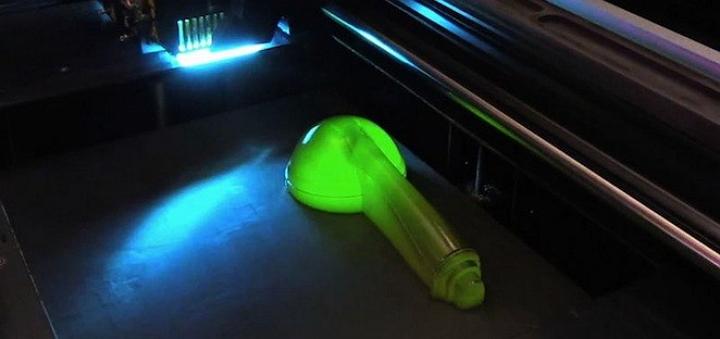Water Pik engineers have used 3D printing technology and rapid prototyping at their Fort Collins, Colorado headquarters for nearly 20 years at their R&D labs to create their shower heads, and they say 3D printing gives their engineers the opportunity to fine-tune and design better shower heads.
Using rapid prototyping, they create computer-based 3D designs before quickly turning them into physical prototypes for testing, and they say the process is some ten times faster from start to finish than traditional prototyping methods.
Mike Quinn, the Lead Shower Design Engineer at Fort Collins, says that after testing, engineers can refine the design and print iterations of prototypes until the design is exactly correct to meet Water Pik’s “OptiFLOW” performance standards.
Quinn says 3D printer technology also allows Water Pik designers to experiment and accomplish product innovations from the SprayShaper shower head to the EasySelect spray selector.
As 3D printing enters the mainstream and designers take on a wide range of challenges, the speedy production and prototyping process had led to a variety of takes on item for the shower, and a quick search of Thingiverse reveals the options available to those bored with their standard design.
Water Pik say that a product development process which once took six months to complete as they created and tested prototypes can now be done in just days, and all due to 3D printing.
With a pair of 3D printers, the company manufactures shower head and internal engine components simultaneously as a way to test new designs. Quinn says that while the printing process may take anywhere from several hours to a couple of days to complete, once all production is done, the testers combine the various elements to measure water flow, spray patterns and other factors used to fine tune the “comfortable showering experience.”
Check out this video detailing the company’s use of 3D printers in their design process:
Ken Hair, Vice President of New Products and Engineering at Water Pik, says the process is key to his company as they face competitors.
“Water Pik’s history and position of being the number-one branded replacement shower head company could not have been achieved without the ability to constantly introduce new innovative products—all developed using 3D printing over the past two decades,” says Hair.
The company designs their shower heads using 3D software, uses multiple 3D printers to create different components and then tests them in a dedicated “spray testing booth.” Over the years, Water Pik has developed rigorous shower head testing processes such as flow testing, distance testing and water force testing.
Testing is critical to Water Pik’s development process as the amount of moving water from a shower head, measured in gallons per minute, is mandated by government regulations which limit shower head flow to a maximum output of 2.5 gallons per minute.
How often do you consider the amount of engineering involved in develop the shower head you use each morning? Let us know in the Water Pik 3D Printing Process forum thread on 3DPB.com.
Subscribe to Our Email Newsletter
Stay up-to-date on all the latest news from the 3D printing industry and receive information and offers from third party vendors.
You May Also Like
3D Printing Unpeeled: Wind Turbines, Probiotics and Lenses
TPI Composites, ORNL and Ingersoll Rand are working to make wind turbine tooling segments that can be 18.3 meters long. These elements also include resistive wires that help keep the...
3D Printing Unpeeled: Digital FDM Filament for Functional Gradients
Just published in Nature, a paper by a Seoul National University team looks at “3D printing with a 3D printed digital material filament for programming functional gradients.” Sang-Joon Ahn, Howon...
3D Printing Unpeeled: $5000 Cold Spray 3D Printer, Roland DGA & Living Materials
The AeroForge is a $5000 cold spray metal printer for copper made by a student team at Rice University. In a paper for ACS Central Science a team from Nanjing...
3D Printing Webinar and Event Roundup: April 28, 2024
In this week’s 3D Printing Webinar and Event Roundup, the Ceramics Expo is taking place in Michigan, Stratasys continues its advanced training courses, and SPE is holding a Polymer Characterization...

































